Let's go to the beaches of Northern Spain!
Spain is a country surrounded by beaches. There are so many to choose from and each one has its own unique qualities. However, often when you arrive in summer, you do not have more than two or three days to spend at the beach for whatever reason, and so you need to decide on which one to go to. In my case, and all of the people from Castille y León, the best option is to go and spend a couple of days at the beaches up in Northern Spain like in Galicia, Asturias, Cantabria even in the Basque country.
Every man to his taste, I am going to tell you about the places and beaches that I got to know in this description of the Northern summer. And the thing is about living in between Valladolid and Segovia, in less than four hours I can get to whatever Northern beach I want to. Although, if I wanted to go to the Mediteranean or to the South, like to Andalucia, I would lose almost an entire day travelling there. For this reason, for all of the Erasmus students and anyone else who wants to spend a day or two exploring the Spanish beaches in spring, I'm going to make a little list for you of the best places that I have visited, their towns and villages and what you can hope to find in each one of them.
Let's start.
Santander (Cantabria)
This city is well known within Spain as it is the capital of the autonomous community of Cantabria, It has 150, 000 inhabitants, but we are only interested in Cantabria's beaches and how to get to them, as well as the other things it can offer us. As a starting point, we are going to look at Valladolid, as it only takes 2. 5 hours in the car to get there. Of course, there are trains that leave every day from the Valladolid Campogrande Station that go to Santander train station which takes a bit under 2 hours. Santander is one of the main towns in Northern Spain and in summer it is filled with tourists, however during the year and above all in spring it is a very pleasant city to visit.
Being a town, it has certain importance and a lot of the region's activity is concentrated around this area. To spend a Saturday at the beach is not expensive at all, taking into account the transport fees coming from Valladolid or wherever else. In order to come here by car there is a dual carriageway, therefore the journey is quite short. Some of the beaches that attract more tourists in this city are those in the city of Sardinero, which may be the most well-known too, beaches such as "Playa de la Concha" and "La Magdalena", or "La Virgen del Mar". If you want more than just a beach and a bit more tourism, you could take a walk through the city and see the Santander Cathedral, the Magdalena Palace, the Cabo Mayor Lighthouse, or some of the many plazas along the streets of the inner city. You could also walk by the promenade and drink something on the terrace of one of the bars there.
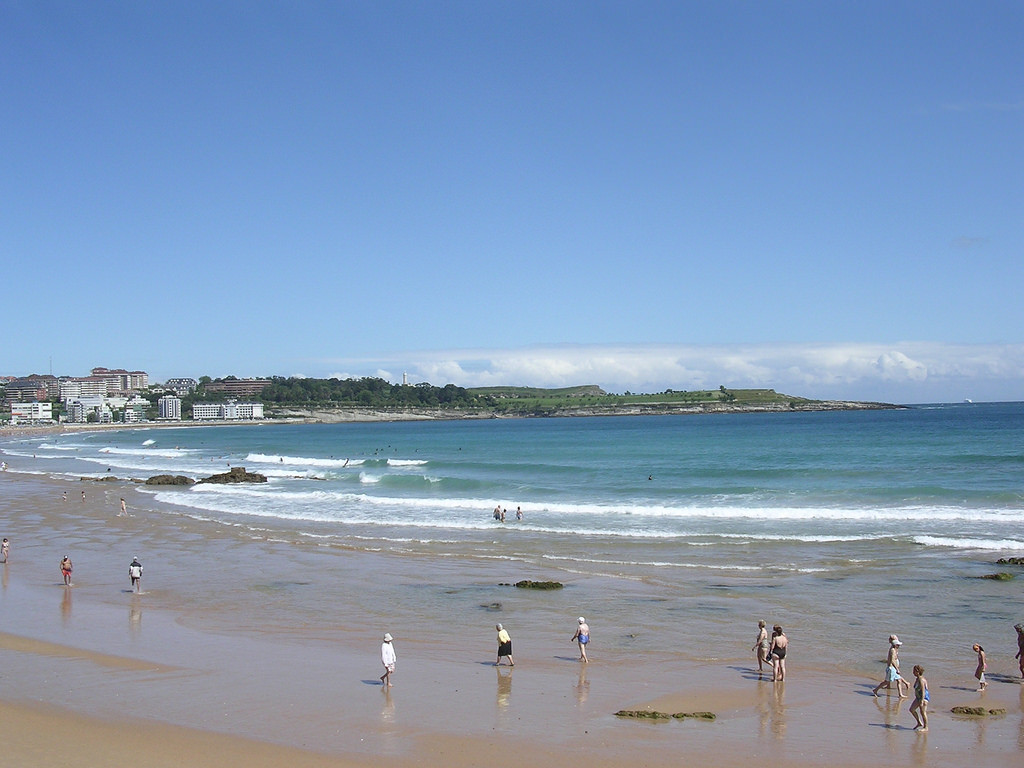
I would definitely choose Santander to spend at least a few days so that you are able to get to know more than just the many beaches, but a bit of the city too, as there is a difference between here and the other towns nearby that can only offer beaches and the sea. Santander has so much more to offer for tourists.
Llanes (Asturias)
In the next autonomous community over, Asturias, you can find one of those towns that comes to everyone's minds when you say the words beach and the north: Llanes. It is locates a few kilometres away from Cantabria and it is one of the most touristy places in the Principality of Asturias. The population doesn't reach 15, 000 inhabitants during the year, but like what happens in Santander and almost all of the towns on the coast, the population peaks during the summer. I know this town well because Andrea and I spent a couple of days together here last summer. From Valladolid it takes a bit more time to get here than to Santander, approximately 3 hours by car and if you come here by train or bus, expect it to be a test of your patience as the connections in Terrelavega or Gijón are a bit bad.
There is not much to see in the centre of town, just enough go for a walk in the evening and see all the different stands they have in the streets, but what I would reccommend, would be is to eat in one of the bars or restaurants that are in the streets and plazas of the part called "la Reguera Carrocero". Of course (this is for the tourists), you have to drink a pint of cider (sidra) in one of the bars or "tascas" (pubs) before you leave. You should eat a couple of typical dishes in these bars/restaurants, they only cost about 15 or 20 euros. The main beaches to visit include "La Playa de las Cuevas" and "La Playa del Sablón". Although if I had to choose, without a doubt I would spend the day on La Playa de las Cuevas because when we went there, there were less people there than on La Playa del Sablón, which is always full of people and really close to town.
Andrea and I spent time at "La Playa de Poo" as well, the beach at the mouth of the river Poo. You have to go there by car from town and there are a lot less people there than on either of the other two, even though it is much larger. It would have deserved a bigger compliment if it were not cloudy on the day we visited it! Another place you must visit in town is "los Cubos de la Memoria", "the Cubes of Memory", which is located on a kind of ledge out to sea.
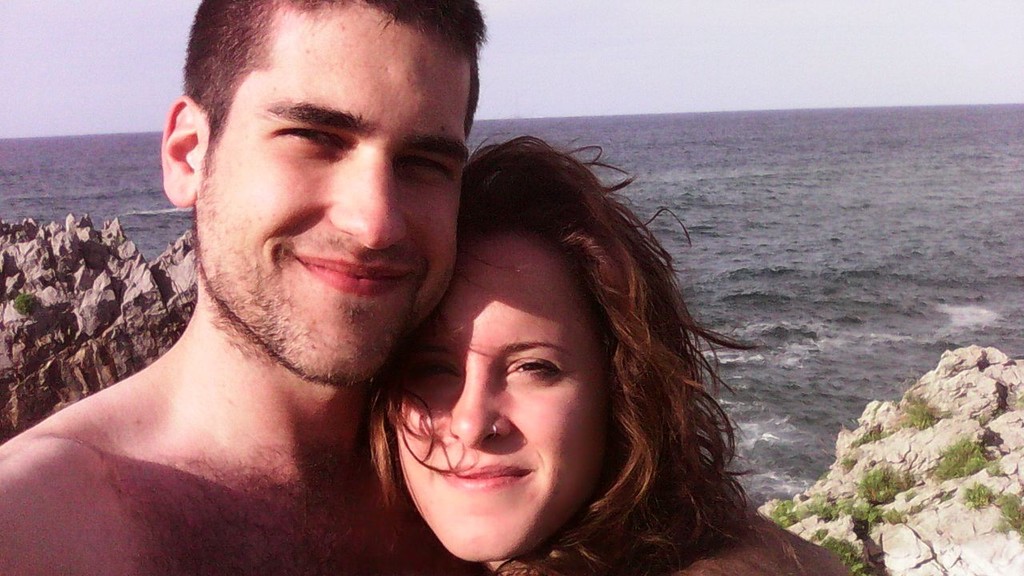
A place a little more isolated but equally as close to the centre is the Playa Toró, although it is only really reachable by car. It is pretty much inaccessible by foot as there is a busy motorway where all of the cars going to and from Llanes drive. Furthermore, for those of you who love nature, the beach has a couple of interesting protrusions of land, like the Punta Huerto Roque for example, or the Punta Randón, each of which is next to the la Playa de Toró. A little closer to town is the Faro de San Antón, the lighthouse.
In Llanes, you can spend the night at the Camping Entreplayas which is located in the entrance, between las Playas de Toró and la Playa de las Cuevas. If you prefer to sleep in a bed, there are loads of hotels that you can find on any internet search.
Noja (Cantabria)
If Llanes was in Asturias a few kilometres away from Cantabria, then Noja is in Cantabria but a few kilometres away from the Basque Country. It is one of the main summer destinations for the people of the Basque Country, as well as Laredo or Santoña. I have stayed in Noja a couple of times, on one occasion just for one day when we went on the bus with a few friends on a trip, and another time when we spent a few nights there and we spent the whole weekend there. Noja is a similar town to Llanes in the fact that during the year it has 3, 000 inhabitants (which is actually less than Llanes) and then during the summer-time that number multiplies massively.
To arrive in Noja from Valladolid, you have to spend 3 hours in the car, although you can also get the bus from a couple of different cities like Santander and in turn there are buses from Valladolid. Despite being quite a small town, Noja has a long coastline with beaches like la Playa de Tregandin, which is inside a cove closer to the city centre. It also has other beaches closer to the west coast, like the one next to the "calle de la Ría" where you can find the small island of San Pedro or the Playa de Berria, which you can also get to by car, but it is kind of more in another municipality, Piedrahita.
In terms of nights out, Noja receives a large amount of tourists in the summer, during which some nightclubs and bars open up that are usually shut during the rest of the year through lack of visitors. And so if you are thinking of going in spring, it is definite that the town will be dead in terms of nights out, but the beaches will be always open to you. Noja also has a camping site where you can pitch your tent for a couple of days and forget about everything. For a more rural visit, you could walk along the shoreline and explore some of the bits and bobs along there like the "Punta del Águila", close to the Playa de Berria, "el Pico del Brusco" next ot the beach of Tregandin, "la Punta Cañaverosa" to the west of the same beach, or "las Puntas de la Mesa and Garfant" which are more to the west.
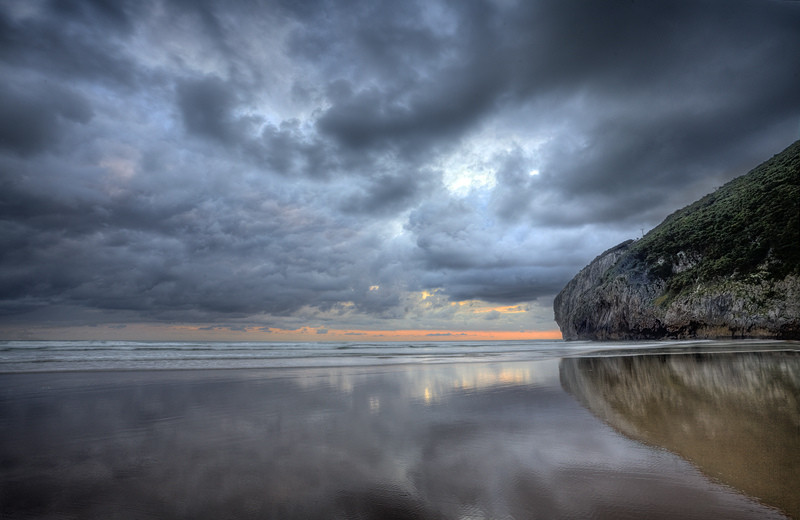
Similarly to Llanes, Noja is considered to be more of a town where you can spend a weekend at the beach, rather than just a day, simply because of the bad connection it has with Valladolid and because there are other places where you can spend only a day that are closer to the city and can be more attractive.
Valdoviño (Galicia)
This town in the north-east of Galicia is the one that I know least about in this region. Valdoviño is located close to Ferrol, in the province of A Coruña, almost in the furthest corner of Spain, which is the main reason why I would reccommend this place to visit for only a day or two. The town has around 6, 000 inhabitants and although it doesn't lack tourists, they are usually Galicians coming over from the nearby towns to visit, and the best thing it has is the beach. On the "Playa de Frouxeira" there are usually families with children, maybe for young people it is not the most attractive place and they would prefer to go to other places that have more people and more atmosphere. The Playa de Frouxeira is really open and it is located right next door to a lake with the same name, the Lago de Frouxeira, where you will see loads of birds and animals.
There is camping in the town which would be a cheaper option and would be quite attractive for those of you who are nature-lovers and love to go on walks. With Valdoviño as a starting point, you could do a large number of hikes in the north-east as well as the south-east. Towards the north-east, if you follow the coastline from la Playa de Frouxeira towards the "Punta de los Faluchos" you can arrive at "la Pedra de Plata" in less than two hours. The Pedra de Plata is one of the most beautiful beaches of the area and you will pass by the Playa de Patín where you can surf. During my teenage years, I spent a few summers camping throughout this area and I remember two things, the rainy days where the sky turned black and it did not stop for the whole day, and the marvelous views from the coastal cliffs that we walked along.
If you choose to walk toward the left, in the direction of Ferrol, you will encounter similar beautiful landscapes (Galicia boasts beauty). From la Punta Faro de Frouxeira to the Cabo Prior you will find an innumerable amount of beaches and inlets. I remember a small beach especially well in the Cala de Portonovo where were with about 50 other people from a walk from the campsite. Another of these routes that you can take is the Valdoviño-Ferrol one which you can do in 3 hours and 15 minutes, it is about 15 kilometres. And if you can visit the Cabo Prior, walking it is 4 hours but if you're lucky enough to have a car it is only 30 minutes away.
As you can probably tell, Galicia is more for backpackers or more for those who simply want to spend a couple of days surrounded by nature and cows (you will see more cows than you will Galicians). I think that it wouldn't be the best place for a group of Erasmus students to go to if you want to party and sit on the beach, but of course, if you enjoy nature then it would be perfect!
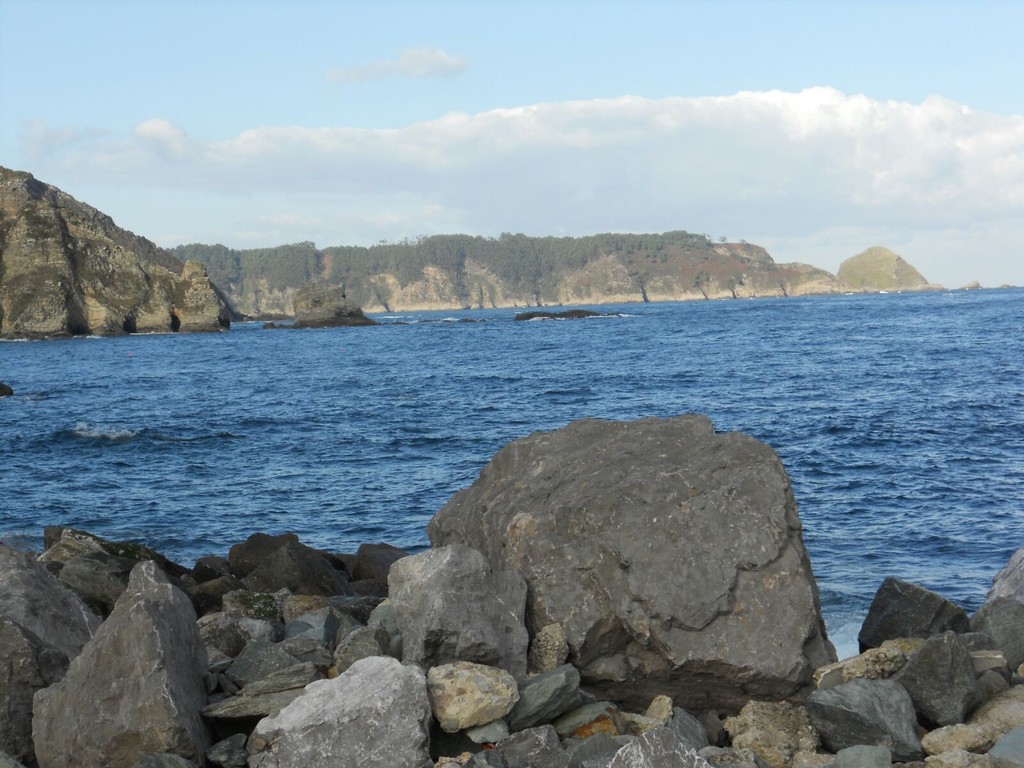
Pechón (Cantabria)
During another one of my camping trips, I went to Pechón, the last town on the frontier between Cantabria and Asturias. Pechón is little more than a small village and although in summer you will see a couple of neighbours walking through the streets, in winter I don think there are many people who live here at all. The best of Pechón, like in Valdoviño, is the beach and of course all the wildlife you are surrounded by and the thousand-and-one opportunities there are for walking and enjoying the countryside. Pechón is quite isolated as it is next to the Nanso river. If you walk towards the south, you will find the Cantabrian motorway that runs all along the border with France and all the way down to the Portuguese border in the province of Pontevedra.
The most popular and closest beach to this tiny town is the la Playa Unquera, although the bad thing about this is it is a pebble beach and so there is not the typical white sand paradise look. But if you do not want to spend the day with pebbles and rocks in between your toes and on your back (like what happened to me), you could always go to other beaches close to the centre, like the Playa de Amió or the Playa de Pechón. They're more touristy with more people, but there is space for everyone...
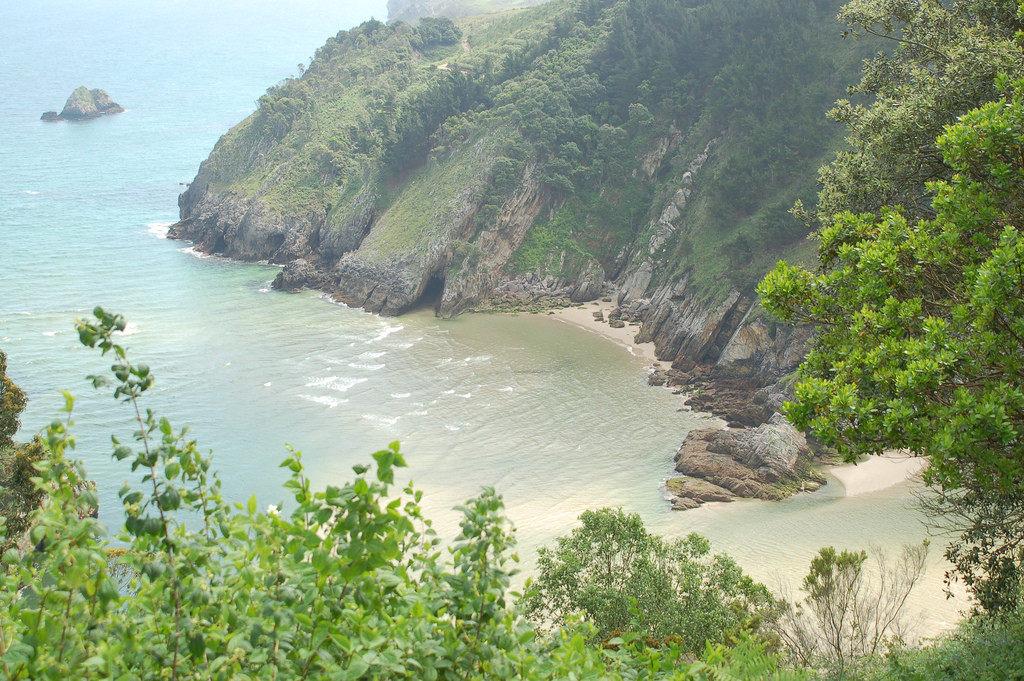
In terms of accommodation, we camped together on a small football pitch with our own tents and the only thing we had to do was ask permission from the local town. We return to it all the time and if you don't like the idea of camping, you can find a hotel (I think I remember there was one in town), but for this it is better that you go somewhere else with more places to see.
More about the beaches, I have to talk about what you can see along them and above all the walks you can do through all of the towns and coasts. To begin, from Pechón towards the look out point of la Tina Menor, it is less than half an hour walk, similar to going towards el Mirador de Pechón which is the closest and the prettiest in the area. If you want to walk to this, you can do the same route that we did, from Pechón towards San Vicente de la Barquera, walking by small roads, it will take you a little less than 2 and a half hours.
You will go past a lot of trees, but if it is enjoying the beach and the views of the sea from the cliffs that you want to do, you can always do the walk fixed to the shoreline, but for this you will need to walk quite a fit further in order to arrive at San Vicente de la Barquera. In San Vincente, you can visit both the centre and the port, the Centro de Interpretación in the Parque Natural de Oyambre, near the little island of Peña Menor. Walking by the shoreline you will come across lots of little inlets like the one called Bellerín, which flows into a a little stream of the same name.
The views walking towards the west are, in general, a little less good due to the coast being smoother and with less protrusions and entrances in the rocks. You will have to cross the Dava river and then walk by the coast, but soon you will have to stop definitely - at the Cueva del Pindal where there is a type of natural gorge which is impossible to go through. The cave is found in the Ensenada de Moral and next to this there is the Punta de San Emeterio. With the same name, San Emeterio, a little further south down the coast you will be able to relax in a little hermitage. If you follow the coastline, the most beautiful thing you will find will be the Ensenada del Rejolguero and the Punta Cebollera, before arriving at the beaches that surround La Franca, another small town (almost a village) where there is camping and you can spend the night here.
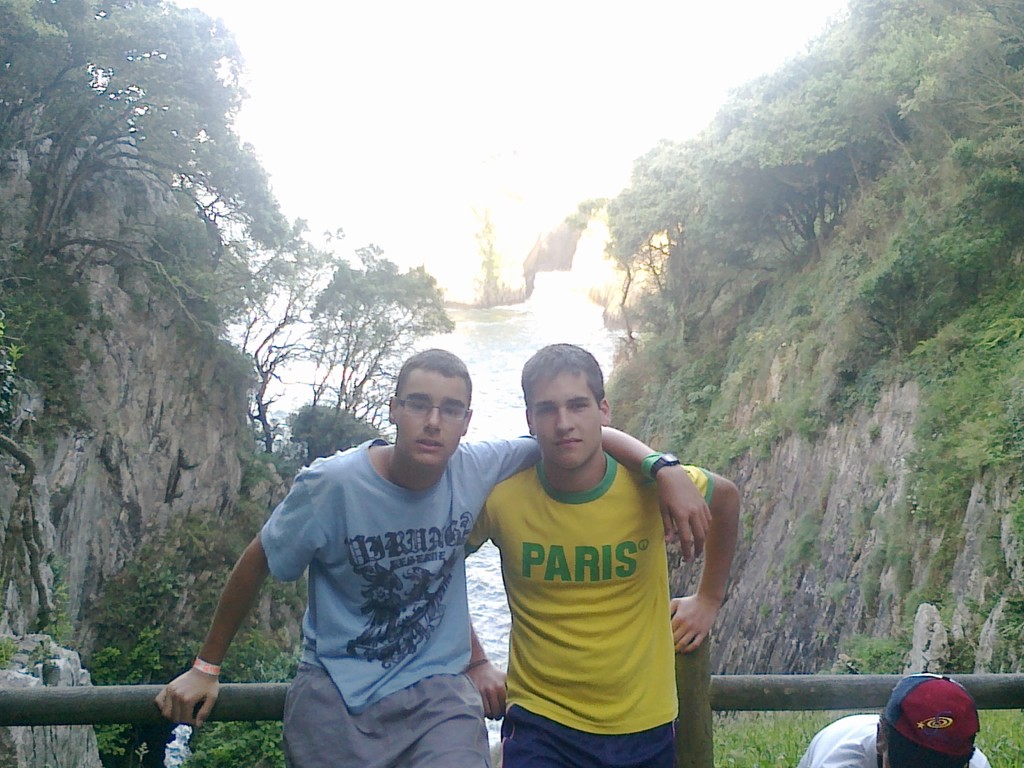
If you don't really like the sea that much and you would like to walk through an area of nature, the direction you need to take is south, towards the Cueva El Rejo which is past a small town called Muñorrodero. You can reach here by road, since it is an unmarked road and hardly any cars pass through here, or you can keep following the Ria Nansa channel, which flows into the sea right next to Pechón.
La Caridad (Asturias)
The last of the beach destinations that I am going to talk about is located west of the Asturian coast and, as with the previous ones, I know it from my teenage summer camps. La Caridad is a small town, with a fewer than 1, 700 inhabitants throughout the year and in summer it shoots up. It is located between two streams, the Salgueiros stream and the Arroyo el Permenande that flows to the north, into the Cantabrian Sea. To go to the beaches you have to head north, it takes around 10 or 15 minutes to reach the main ones, on the left there is the Playa de Viavélez and on the right, the Playa de Permenande. You can also walk to another beach located to the east of La Caridad, where the Castello stream ends, but I think it is a better option to go to the first two.
When we were in La Caridad, we stayed in a college that seemed to parade as a hostel during the summer. But, if you want to visit the area during term-time, there is a campsite next door to Viavélez, called Camping Playá de Castelló where you can spend the night with your own tent. But the best things you can do are the walks from the city of La Caridad.
To the east, you have a good destination called Navia, where besides enjoying the estuary and the beautiful views, you can also enjoy countless landscapes along the way. To go to Navia you can follow a road that is parallel to the motorway, or you can walk a bit further and go along the coastal route. This second option seems better for those who want to enjoy the landscapes and especially the sea, as you will pass by numerous places such as Punta Ferreiras, Punta Vella and Punta Salías.
On the walk you will also find Corrales, Cereixo y Riboira, the small island of Corbeira, the small islands Cónicos, Castillín, Cerredos, and two more small islands called Estación de Fuera and Estación de Tierra. The small isladns of Gabieiros and Illones are some of the most beautiful, or El Islón, the biggest of them all. If you are going to follow along the whole coast, you will find the lighthouse of el Cabo de San Agustín from where you will see some magnificent views. I think its clear that the coastal route is quite long and tiring, but the views are some of the most rewarding that you will find. It is quite tiring due to the continuous uphill and downhill parts in between the rivers, cliffs, capes, coves... But it's worth it.
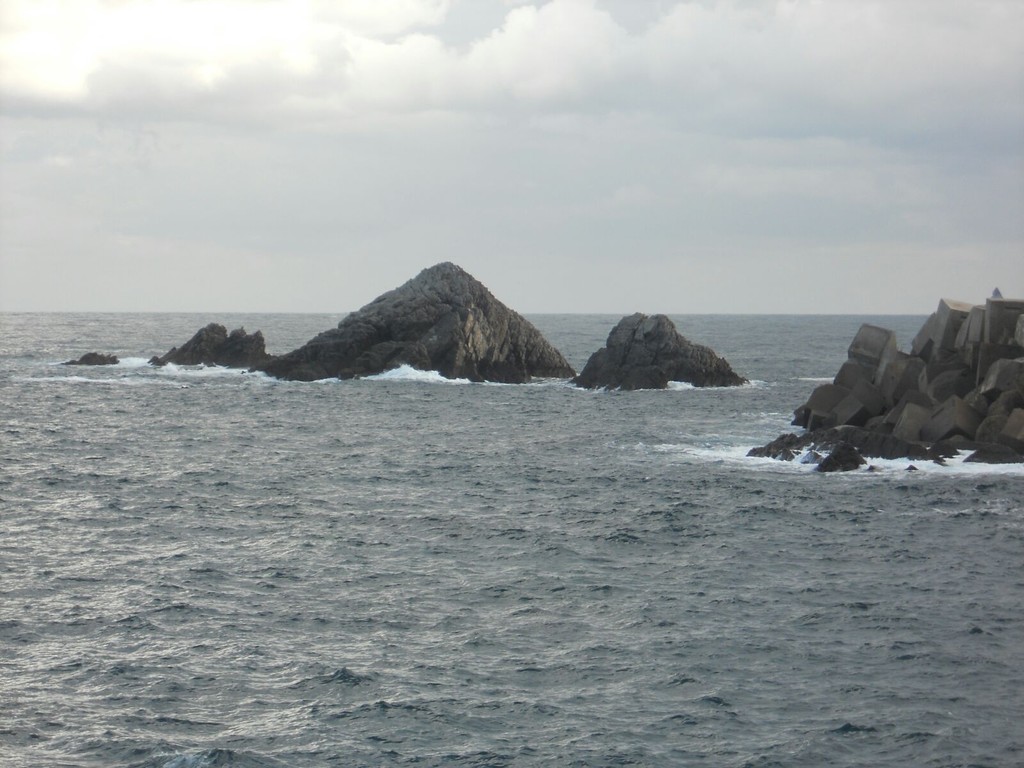
For the extreme opposite, heading towards the west, you will find the natural border between Asturias and Galicia, the river of Ribadeo or del Eo. This walk is a little longer than the previous one towards Navia as you will need to set aside around 4 and a half hours, and with breaks it can be more. The coast has many small entrances and protrusions and so I think it is better in this case to go by a route that is a bit more inland, between the motorway and the coast. You can always turn towards the sea to the right and go and look at one of the coves or beaches because they are so numerous.
Maybe one of the first detours you will have to take towards the sea will be at the banks of the river Porcía in order to see the mouth in Forcón, from where you can see the Islas Castelos, a unique grouping of islands.
In total it is around 21 kilometres from La Caridad to Ribadeo, and take into account that every detour you take will add at least half an hour to your walk. The place I think you need to stop and take a look at is the small coastal town called Tapia de Casariego and the neighbouring town of Entreplayas, and visit the port and the Cabo Cebes, or see from the coast El Hórreo. It is one of the most significant points during the walk and the detour is worth it, although maybe it would be better to do it on the way there, as during the return journey you will be more tired and I highly doubt that you will want to take yet another detour on your way back to La Caridad.
Once you have reached Ribadeo, you can take a little trip around the town and enjoy yourself next to the Ribadeo river. You can see the banks of the Punta de Castropol (the end of the neighboring town that goes into the estuary) and Figueras, the Asturian town on the banks of the river. In Santa Gadéa you can stop and spend the night on the beach (nobody will stop you), and if you have a sleeping abg and everything you will need, I think it is an unforgettable experience to watch the sunrise. But the best of the north are not the sunrises, but the sunsets, since the sun falls in the west and if you have the opportunity, make sure you enjoy some of these spring or summer sunsets...
For the moment that is all, I hope that with this guide you have started considering going to spend one, two or three days in the north of Spain, either to spend the dead hours of the day on the beaches of Noja, Llanes or Santander or to explore the unknown coastal paths of Asturias, Cantabria or Galicia.
I hope that you enjoy them.
Until next time!
Photo gallery
Content available in other languages
- Español: Nos vamos a las playas del norte
- Deutsch: Fahren wir an die Strände im Norden Spaniens
- Italiano: Ce ne andiamo alle spiagge del nord
- Français: Direction les plages du nord
Want to have your own Erasmus blog?
If you are experiencing living abroad, you're an avid traveller or want to promote the city where you live... create your own blog and share your adventures!
I want to create my Erasmus blog! →











Comments (0 comments)